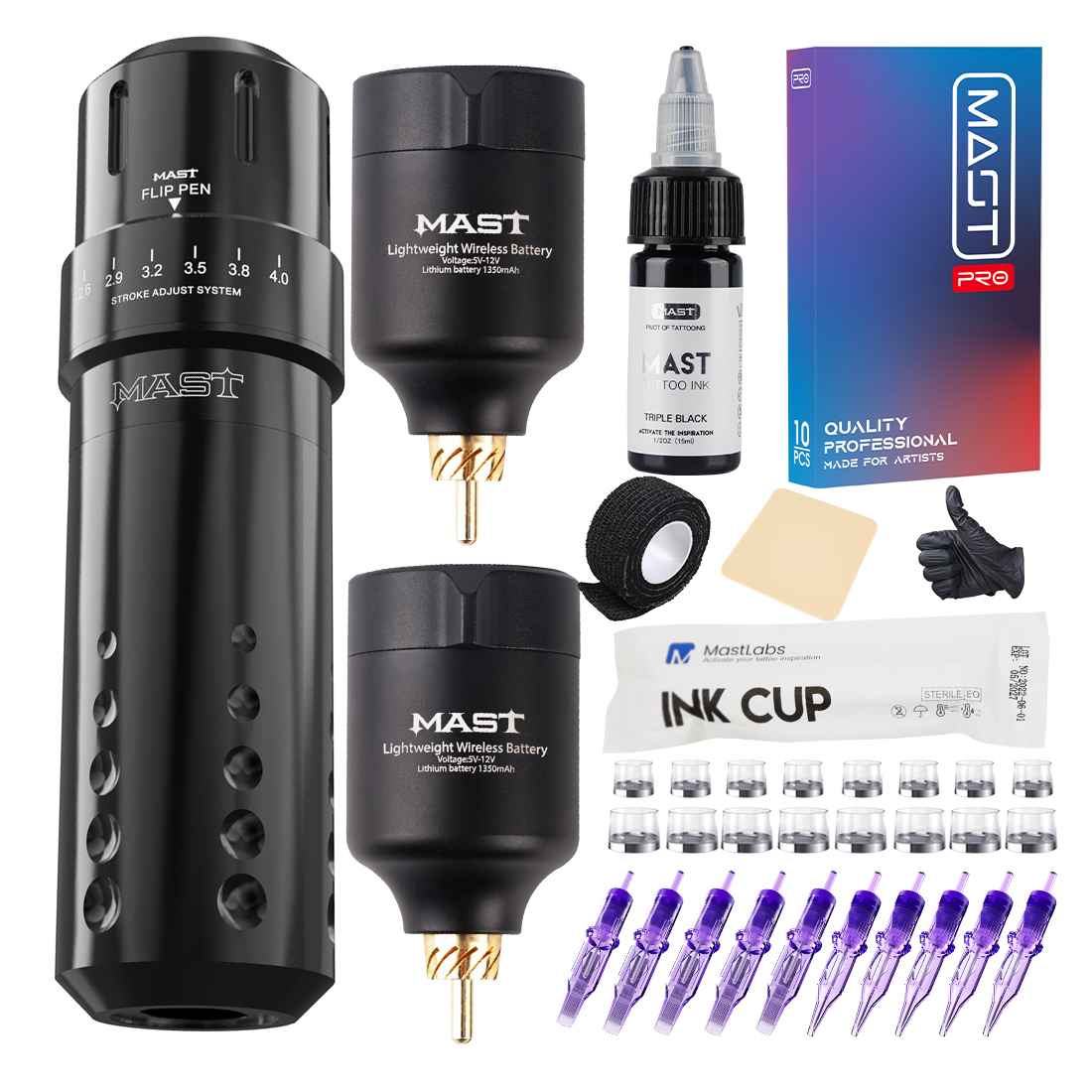Inked on the skin, tattoos have long been a powerful form of self-expression, serving as enduring works of art that tell stories and showcase individuality.
But have you ever wondered what happens to tattoos as the years go by?
As time weaves its intricate tapestry on our bodies, the question arises: How do tattoos fare in the face of aging?
In this blog post, we delve into the captivating world of tattoo transformation, exploring the fascinating ways these vibrant designs evolve and adapt as we journey through life.
Prepare to uncover the secrets that lie beneath the skin, as we embark on a captivating exploration of what happens to tattoos when you are older.
Understanding the Aging Process of Tattoos
Understanding the aging process of tattoos is crucial for tattoo enthusiasts and curious onlookers alike, as it unravels the mysteries behind the dynamic relationship between our skin and the intricate designs that adorn it.
Let’s explore four key factors that contribute to the aging process of tattoos: ink dispersion and fading, changes in skin elasticity and texture, the impact of sun exposure, and the effects of weight fluctuations and muscle tone changes.
Ink Dispersion and Fading Over Time
One of the most noticeable changes that occur as tattoos age is the dispersion and fading of ink.
Initially, fresh tattoos display vibrant colors and crisp lines, but as time passes, the pigments within the skin gradually disperse and lose their intensity.
This phenomenon is primarily influenced by the body’s natural healing processes and the quality of the tattoo pigments used.
Over the years, the ink particles may migrate within the skin’s layers, causing the once sharply defined design to blur and soften.
Additionally, exposure to ultraviolet (UV) radiation from the sun can accelerate the fading process, making it crucial to protect tattoos from excessive sunlight.
Also Read: Why do old tattoos spread?
Changes in Skin Elasticity and Texture
As we age, our skin undergoes intrinsic changes that impact the appearance of tattoos.
Collagen and elastin, the proteins responsible for maintaining skin elasticity and firmness, gradually diminish over time, leading to skin sagging and wrinkling.
These natural aging processes can cause tattoos to lose their original shape and definition, as the skin stretches or contracts.
Areas of the body that experience significant weight gain or loss, such as the abdomen or arms, may particularly undergo noticeable alterations, with tattoos potentially becoming distorted or stretched beyond their original proportions.
Impact of Sun Exposure on Tattoos
The sun’s powerful rays can be both a friend and a foe to tattoos. While a healthy dose of sunlight can enhance the vibrancy of fresh ink, overexposure to UV radiation can pose a significant threat to tattoo longevity.
Prolonged sun exposure can lead to accelerated fading and color distortion, as UV rays break down the tattoo pigments beneath the skin’s surface.
Therefore, it is essential to shield tattoos from excessive sun exposure by applying sunscreen and wearing protective clothing, particularly in areas prone to frequent sun exposure.
Effects of Weight Fluctuations and Muscle Tone Changes
Weight fluctuations and changes in muscle tone can significantly impact the appearance of tattoos over time.
When the body undergoes weight gain or loss, the skin stretches or contracts accordingly, potentially causing tattoos to stretch or become distorted.
Similarly, changes in muscle mass and tone, such as through physical training or aging, can alter the underlying contours of the skin, potentially affecting the shape and alignment of tattoos.
It is worth noting that the impact of these changes on tattoos varies depending on the location of the ink and the extent of the body’s transformation.
Tattoo Care and Maintenance for Longevity
Once you’ve adorned your skin with a stunning piece of inked artwork, it becomes essential to understand that a tattoo is not just a one-time creation but a lifelong commitment.
Like any investment, tattoos require proper care and maintenance to ensure they retain their vibrancy and clarity as the years go by.
Importance of Initial Tattoo Care
Like the first brushstroke on a canvas, the initial care of your tattoo sets the foundation for its long-term health and appearance.
Immediately after getting inked, your tattoo artist will provide specific aftercare instructions, emphasizing the importance of cleanliness and proper healing.
Following these guidelines diligently will minimize the risk of infection, scarring, and other complications that could affect the final outcome of your tattoo.
Also Read: Is it possible for a tattoo to move?
Regular Moisturization to Prevent Dryness and Fading
Just as a painting on canvas needs preservation, tattoos require continuous nourishment to maintain their brilliance.
Moisturizing your tattoo regularly with a tattoo-specific or fragrance-free lotion helps keep the skin hydrated, preventing dryness and itchiness that can lead to scaly or cracked tattoos.
By keeping the skin supple, moisturization helps preserve the ink’s vibrancy and prevents premature fading over time.
Protecting Tattoos from Excessive Sun Exposure
The sun’s powerful rays can be both a friend and a foe to your tattoos.
While sunlight can enhance the colors and bring out their brilliance, excessive exposure can have adverse effects, causing fading and distortion of the original design.
To protect your tattoos from the sun’s damaging UV rays, it’s crucial to apply a high-quality sunscreen with a high SPF, especially when spending extended periods outdoors.
Shielding your tattoos with clothing or seeking shade during peak sun hours can also help maintain their integrity.
Tattoo Touch-ups and Refreshing Techniques
As the years pass, it’s natural for tattoos to undergo subtle changes. Factors such as aging, sun exposure, and skin elasticity can contribute to the gradual fading or blurring of tattoo lines and colors.
However, professional tattoo touch-ups and refreshing techniques can breathe new life into your inked masterpiece.
Skilled tattoo artists can rework and re-ink faded areas, sharpening details and restoring the tattoo’s original vibrancy.
Regular touch-ups ensure that your tattoo remains a true representation of your vision and artistic expression.
Common Changes and Challenges in Older Tattoos
As the years pass, tattoos gracefully age alongside us, acquiring unique characteristics and facing their own set of challenges.
Let’s see the captivating interplay of ink, skin, and time, uncovering the secrets behind the loss of sharpness, blurring, sagging, and discoloration that may affect our beloved tattoos.
Loss of Sharpness and Definition
Time, as the great equalizer, does not spare even the most intricate of tattoo designs.
One of the most noticeable changes that older tattoos undergo is the loss of sharpness and definition.
The once pristine lines and intricate details may gradually soften and blur, resulting in a less defined appearance.
This natural process is influenced by several factors, including the quality of the original tattoo work, exposure to the sun’s ultraviolet (UV) rays, and the skin’s own aging process.
While some designs may retain their clarity for years, others may require touch-ups or refinements to restore their original crispness.
Blurring and Spreading of Ink
Just as watercolor paintings blend and meld over time, the pigments within tattoos can also blur and spread.
This phenomenon occurs as the skin’s elasticity changes and collagen fibers break down with age.
The ink particles, once meticulously placed, may gradually disperse, causing the boundaries of the design to appear less distinct.
While this blurring effect may lend a certain charm to some tattoos, others may require additional shading or outlining to maintain their intended appearance.
Wrinkles and Sagging Skin Affecting Tattoo Appearance
The aging process brings with it the inevitable companions of wrinkles and sagging skin.
As the skin loses elasticity and collagen, it may begin to sag, resulting in changes in the overall appearance of a tattoo.
What once adorned a taut canvas may now encounter subtle shifts in shape and position.
Wrinkles may intersect with once smooth lines, altering the composition of the tattoo.
Despite these changes, many individuals find that their tattoos adapt and mold themselves to the evolving landscape of their skin, embodying a unique beauty that reflects the passage of time.
Discoloration and Yellowing of Ink
Time’s effect on tattoos extends beyond physical changes in the skin; it can also impact the vibrancy and color of the ink itself.
The pigments used in tattoos may undergo slight alterations over the years, with certain hues fading or shifting in tone.
Additionally, the accumulation of sun exposure, as well as the body’s natural processes, can contribute to the discoloration and yellowing of ink.
Regular application of sunscreen and moisturizers can help protect tattoos from excessive fading and maintain their brilliance.
Also Read: Do tattoos move with age?
How to Keep Your Tattoos Looking Great as You Age
As the years gracefully pass, it’s only natural to wonder how to preserve the beauty and vibrancy of your tattoos, ensuring they remain captivating works of art for decades to come.
While the aging process may bring changes to our bodies, there are steps you can take to keep your tattoos looking vibrant, fresh, and awe-inspiring.
Practicing Good Skincare Habits
Just like any investment, tattoos require care and attention to stand the test of time.
By adopting a comprehensive skincare routine, you can nourish and protect the skin, ultimately benefiting the longevity of your ink.
Regularly moisturizing your tattooed areas with tattoo-specific lotions or fragrance-free moisturizers will keep the skin hydrated and supple, preventing it from becoming dry or dull over time.
Additionally, avoiding excessive exposure to hot water, harsh soaps, and abrasive scrubs will help preserve the colors and clarity of your tattoo, ensuring it remains a vivid and captivating work of art.
Regularly Using Sunscreen on Tattoos
The sun’s powerful rays can wreak havoc on your tattoo’s vibrancy, causing colors to fade and lines to blur over time.
Shielding your tattooed skin from harmful UV radiation is essential for maintaining its original glory.
Make sunscreen with a high sun protection factor (SPF) your loyal companion, diligently applying it to your tattoos whenever you are exposed to the sun.
This vital step not only protects your ink from sun damage but also safeguards the overall health and integrity of your skin.
Maintaining a Healthy Lifestyle
Your body’s well-being has a direct impact on the appearance of your tattoos. By adopting a healthy lifestyle, you can enhance the longevity and vibrancy of your inked creations.
Regular exercise promotes blood circulation, which in turn helps deliver vital nutrients and oxygen to your tattooed skin, keeping it nourished and vibrant.
Additionally, staying hydrated by drinking an ample amount of water each day assists in maintaining the skin’s elasticity and suppleness, contributing to the overall freshness of your tattoos.
Considering Tattoo Placement for Longevity
When getting a tattoo, strategic placement can play a crucial role in preserving its visual appeal over time.
Areas of the body that are prone to significant stretching or sun exposure, such as the stomach, chest, or hands, may experience more noticeable changes as you age.
By opting for less prone-to-aging body parts like the upper back, thighs, or shoulders, you can minimize the impact of natural skin transformations on your tattoos, helping them remain vibrant and visually striking for years to come.
Tattoo Removal Options for Older Individuals
When it comes to tattoo removal, age becomes a crucial factor, as the skin undergoes natural transformations over time.
Let’s get into the fascinating world of tattoo removal options specifically tailored for older individuals, offering a glimpse into the possibilities of transformation and rejuvenation.
Laser Tattoo Removal: Erasing the Past, Embracing the Future
One of the most common and effective methods for tattoo removal, laser tattoo removal harnesses the power of advanced laser technology to fade and ultimately eliminate unwanted ink.
This non-invasive procedure works by targeting the tattoo’s pigments with short pulses of high-intensity light, causing them to break down into smaller particles.
Over time, the body’s immune system flushes out these fragmented pigments, gradually lightening the tattoo.
Laser tattoo removal offers older individuals a reliable and precise option for gradually fading or completely removing their tattoos, allowing them to embrace a new chapter in their lives.
Surgical Tattoo Removal: Surgical Precision for Unwanted Ink
For individuals with larger or more complex tattoos, surgical tattoo removal may be a viable option.
This procedure involves physically excising the tattooed skin using a scalpel or a specialized dermatological tool.
While surgical tattoo removal tends to be more invasive than laser treatment, it is a suitable choice for individuals seeking immediate results or with tattoos that may not respond well to laser removal.
The surgical approach offers a tailored solution for mature individuals who wish to bid farewell to their tattoos and begin anew.
Cover-up Tattoos: Embracing a Fresh Narrative
Rather than completely eradicating a tattoo, some older individuals may choose to explore cover-up tattoos as an alternative.
Cover-up tattoos involve strategically designing a new tattoo to camouflage or incorporate the existing one.
Skilled tattoo artists adeptly blend new ink into the old design, creating a captivating fusion that breathes new life into the previous artwork.
Cover-up tattoos offer a creative and personalized option for mature individuals who want to transform their existing tattoos into something that better aligns with their present identity and aesthetic preferences.
Also Read: Do tattoos change with age?
Conclusion
In conclusion, as we navigate the passage of time, our tattoos become witnesses to our life’s journey, evolving and transforming alongside us.
We’ve explored what happens to tattoos when you are older, the fascinating ways tattoos change as we age, from fading colors to potential distortion.
Proper tattoo care and strategic placement can help preserve their vibrancy over the years.
It is essential to make informed decisions about tattoos at any age, considering their long-term implications.
Remember, tattoos are not just fleeting trends but lasting expressions of who we are.
So, whether you’re considering your first tattoo or reflecting on existing ones, embrace the power of self-expression with wisdom and conviction, knowing that your ink will continue to weave an enduring tale as you grow older.






